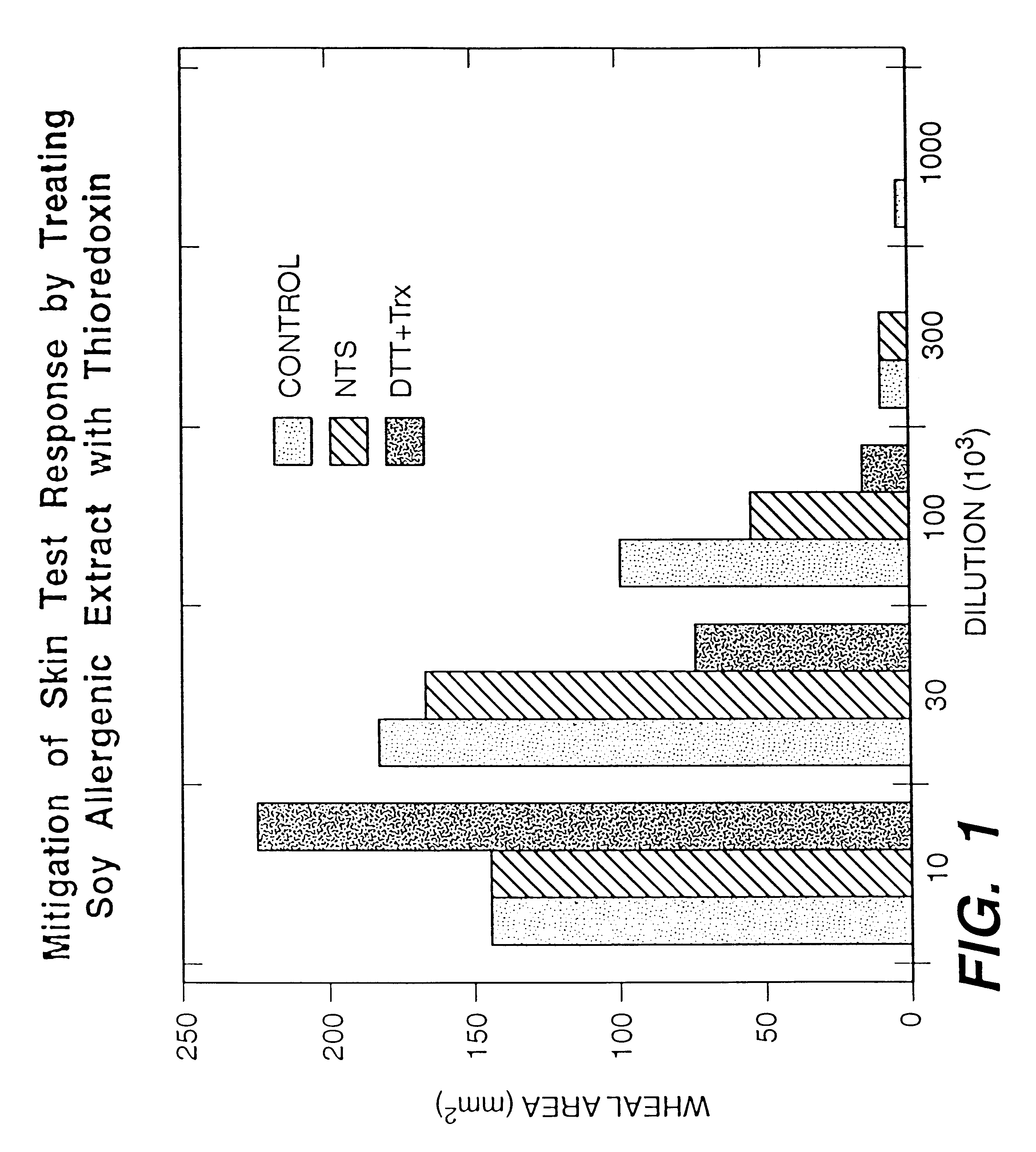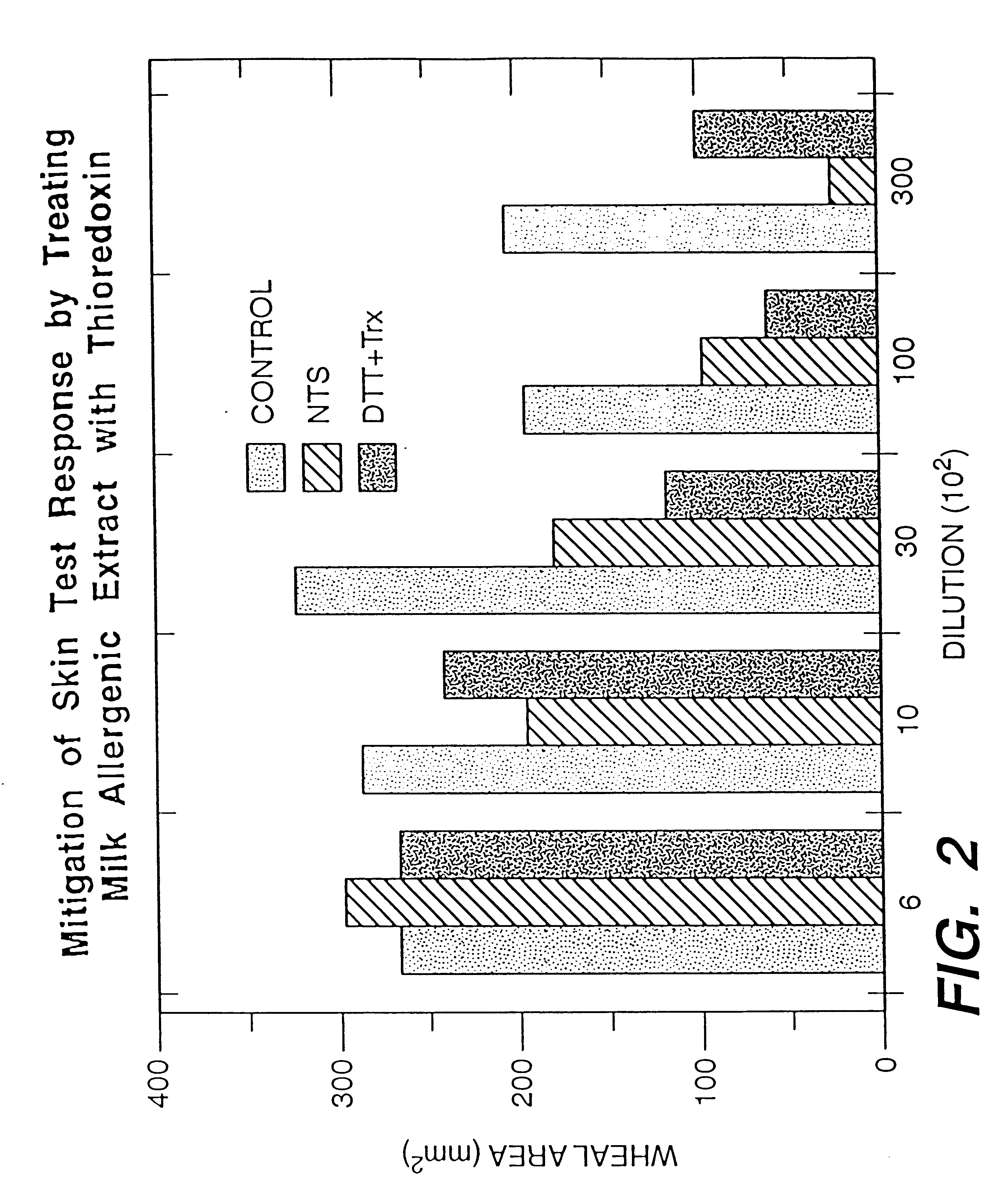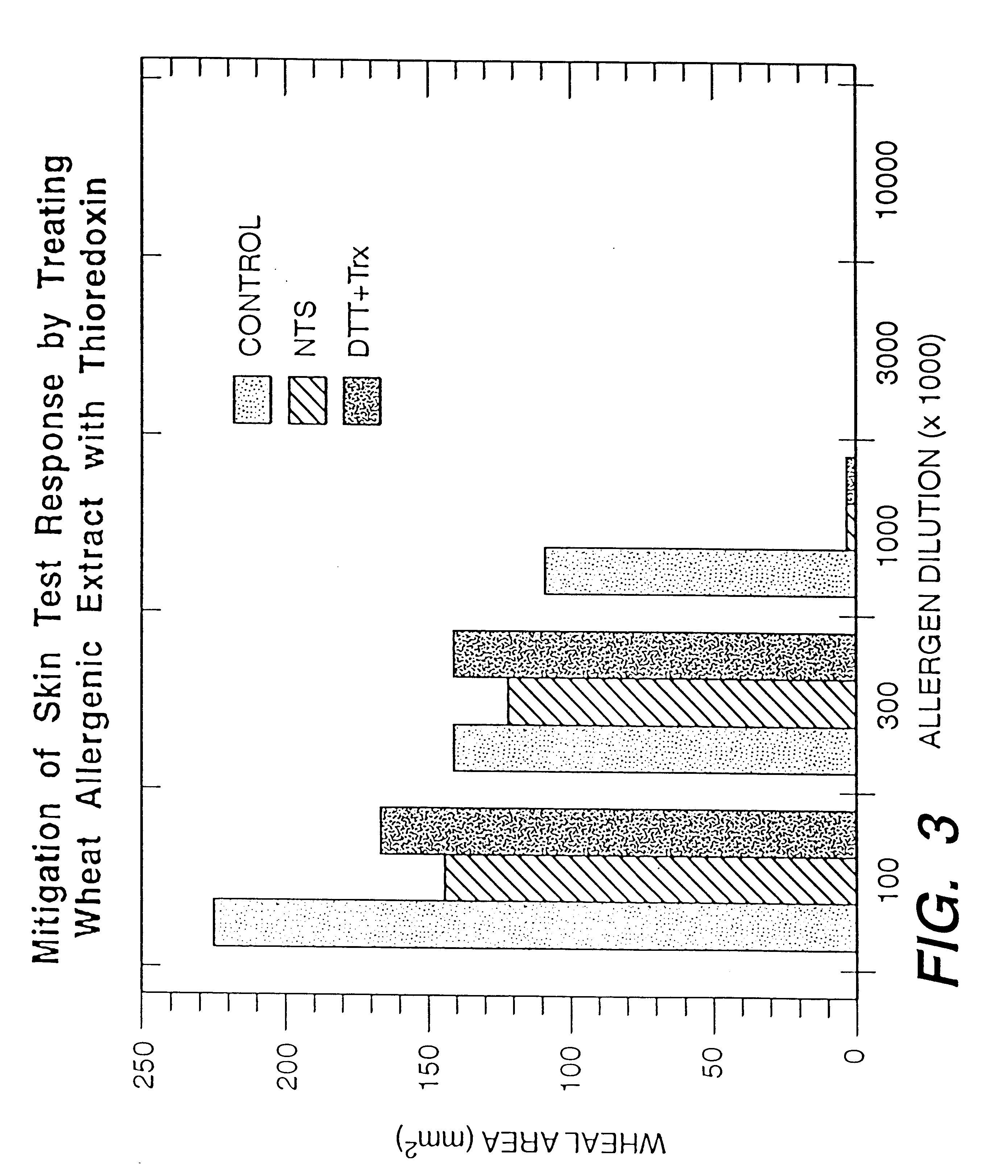Increasing the digestibility of food proteins by thioredoxin reduction
a technology of thioredoxin and food proteins, which is applied in the field of thiol redox proteins, can solve the problems of weakening dough, glutenins and gliadins, and reducing dough quality, so as to improve the proteolysis and therefore the digestibility of food proteins, and be more digestible. , the effect of increasing the number of foods
- Summary
- Abstract
- Description
- Claims
- Application Information
AI Technical Summary
Benefits of technology
Problems solved by technology
Method used
Image
Examples
example 1
Thioredoxin-linked Reduction of α-Amylase Inhibitors
Enzyme Activation Assays
The capability to replace a specific thioredoxin in the activation of chioroplast enzymes is one test for the ability of thiol groups of a given protein to undergo reversible redox change. Even though not physiological in the case of extraplastidic proteins, this test has proved useful in several studies. A case in point is purothionin which, when reduced by thioredoxin h activates chloroplast FBPase (Wada, K. et al. (1981), FEBS Lett. 124:237-240, and Johnson, T. C. et al. (1987), Plant Physiol. 85:446-451). The FBPase, whose physiological activator is thioredoxin f, is unaffected by thioredoxin h. In this Example, the ability of cystine-rich proteins to activate FBPase as well as NADP-MDH was tested as set forth above. The α-amylase inhibitors from durum wheat (DSG-1 and DSG-2) were found to be effective in enzyme activation; however, they differed from purothionin in showing a specificity for NADP-MDH rat...
example 2
DTNB Reduction Assays
A second test for thiol redox activity is the ability to catalyze the reduction of the sulfhydryl reagent, 2′,5′-dithiobis(2-nitrobenzoic acid) (DTNB), measured by an increase in absorbance at 412 nm. Here, the protein assayed was reduced with NADPH via NTR and a thioredoxin. The DTNB assay proved to be effective for the α-amylase inhibitors from both durum (DSG-1 and 2) and bread wheat (CM-1). When reduced by the NADP / thioredoxin system (in this case using NTR and thioredoxin from E. coli), either DSG-1 or DSG-2 markedly enhanced the reduction of DTNB (NADPH→NTR→Thioredoxin→DSG→DTNB). The DTNB reduction assay was carried out with 10 μg thioredoxin and 10 μg NTR and 20 μg of DSG-1 or DSG-2. CM-1 was also effective in the DTNB reduction assay, and, as with NADP-MDH activation (Table I), was detectably more active than the DSG proteins The conditions for the CM-1 assay were the same as for the DSG / DTNB assay except that the DSG proteins were omitted and purothioni...
example 3
Protein Reduction Measurements
The availability of monobromobimane (mBBr) and its adaptation for use in plant systems has given a new technique for measuring the sulfhydryl groups of plant proteins (Crawford, N. A. et al. (1989), Arch. Biochem. Biophys. 271:223-239). When coupled with SDS-polyacrylamide gel electrophoresis, mBBr can be used to quantitate the change in the sulfhydryl status of redox active proteins, even in complex mixtures. This technique was therefore applied to the inhibitor proteins to confirm their capacity for reduction by thioredoxin. Here, the test protein was reduced with thioredoxin which itself had been previously reduced with either DTT or NADPH and NTR. The mBBr derivative of the reduced protein was then prepared, separated from other components by SDS-polyacrylamide gel electrophoresis and its reduction state was examined by fluorescence. In the experiments described below, thioredoxin from E. coli was found to be effective in the reduction of each of th...
PUM
| Property | Measurement | Unit |
|---|---|---|
| Mass | aaaaa | aaaaa |
| Temperature | aaaaa | aaaaa |
| Temperature | aaaaa | aaaaa |
Abstract
Description
Claims
Application Information
 Login to View More
Login to View More - R&D
- Intellectual Property
- Life Sciences
- Materials
- Tech Scout
- Unparalleled Data Quality
- Higher Quality Content
- 60% Fewer Hallucinations
Browse by: Latest US Patents, China's latest patents, Technical Efficacy Thesaurus, Application Domain, Technology Topic, Popular Technical Reports.
© 2025 PatSnap. All rights reserved.Legal|Privacy policy|Modern Slavery Act Transparency Statement|Sitemap|About US| Contact US: help@patsnap.com



